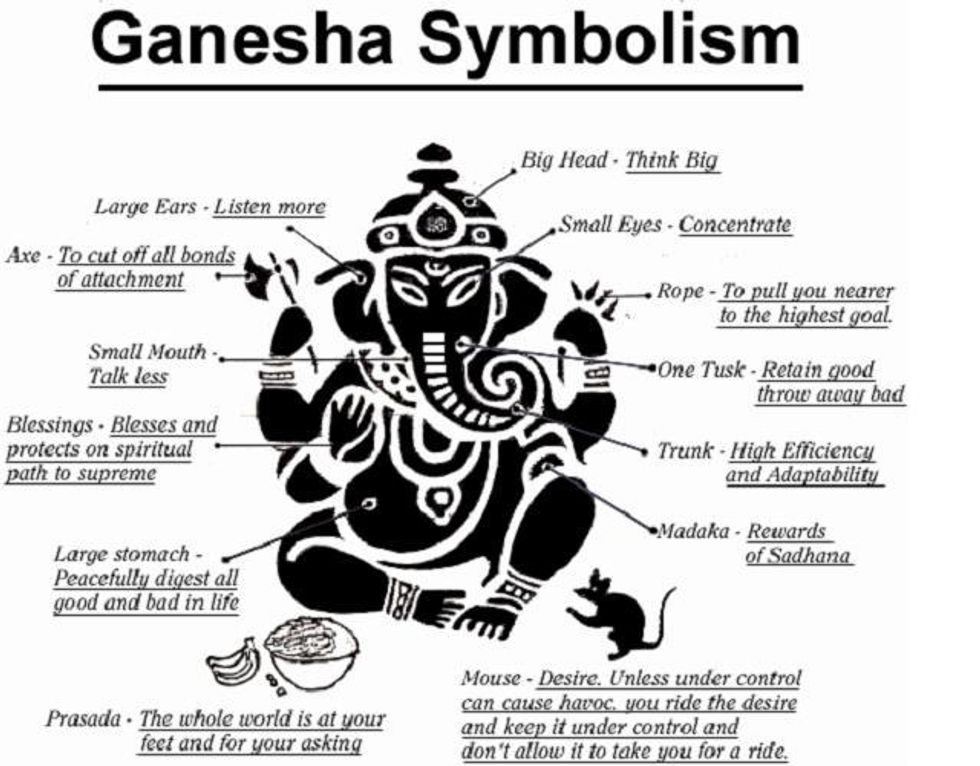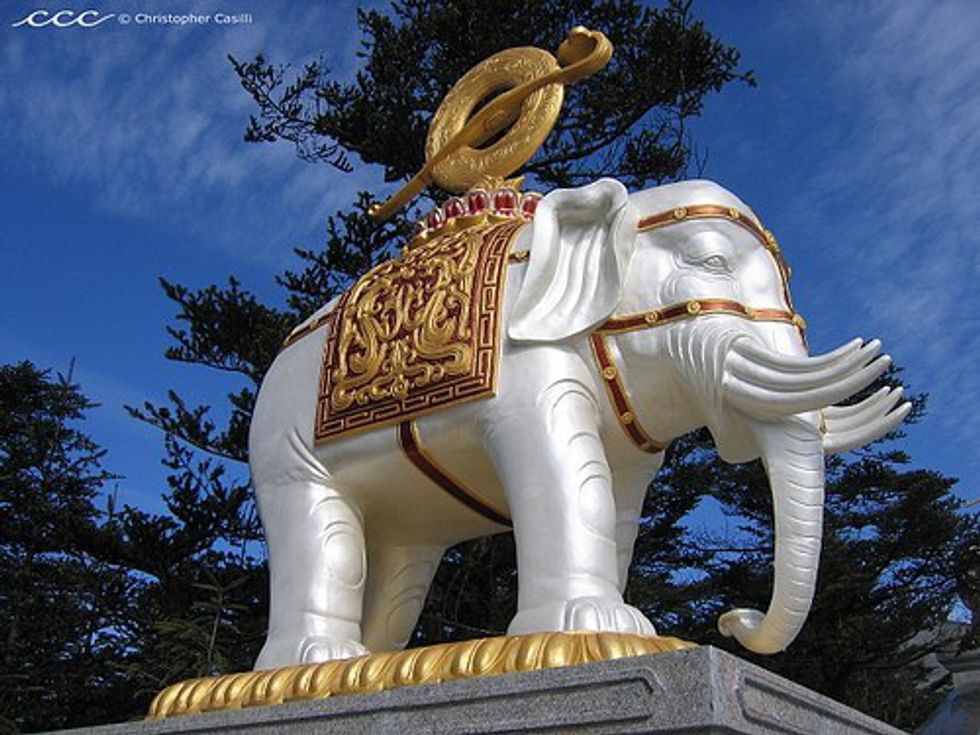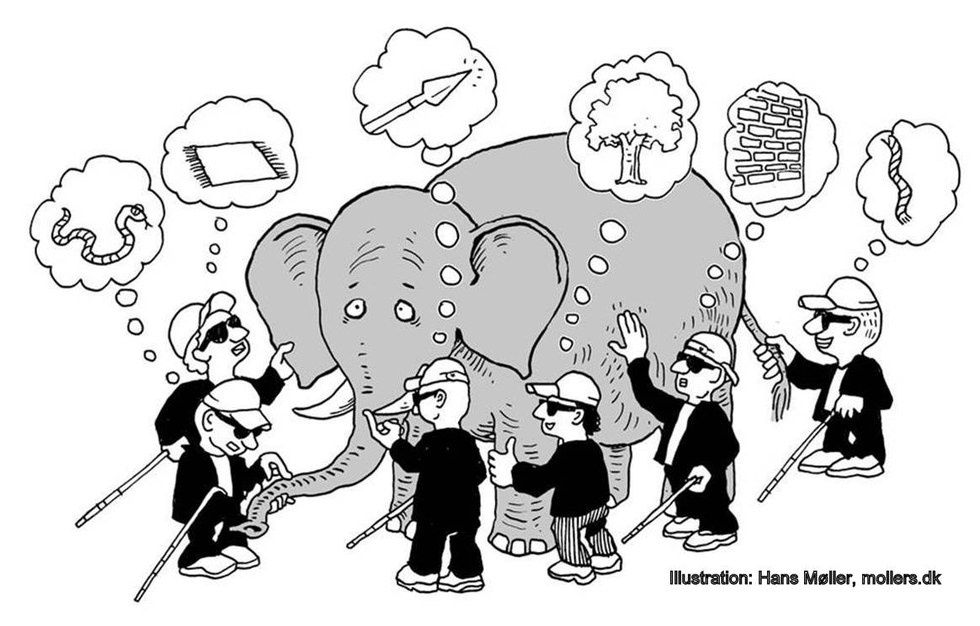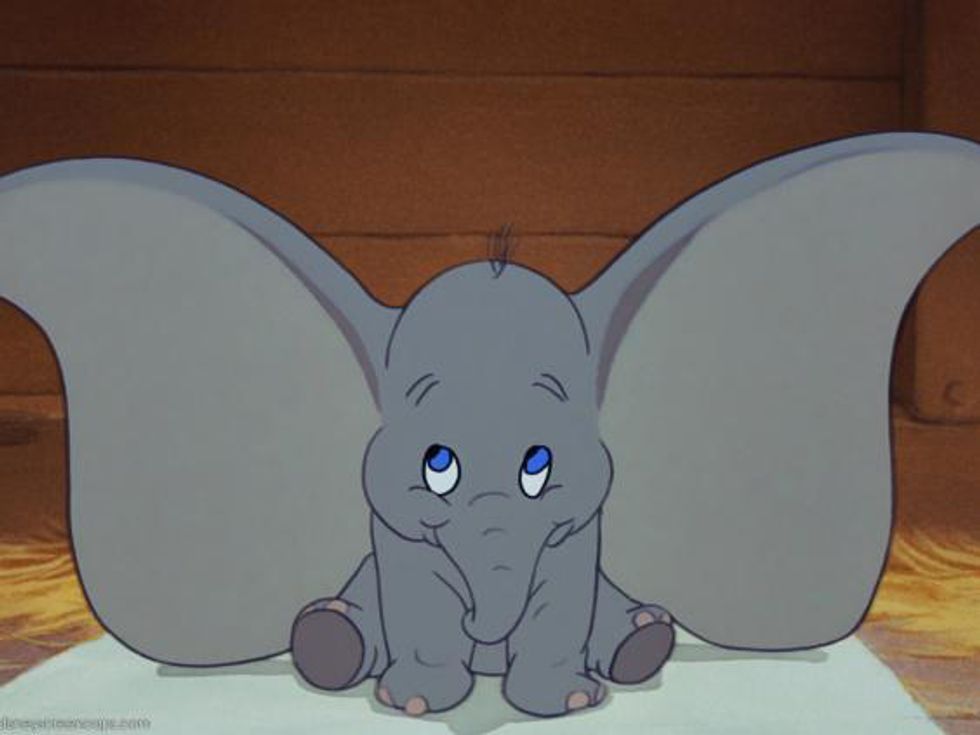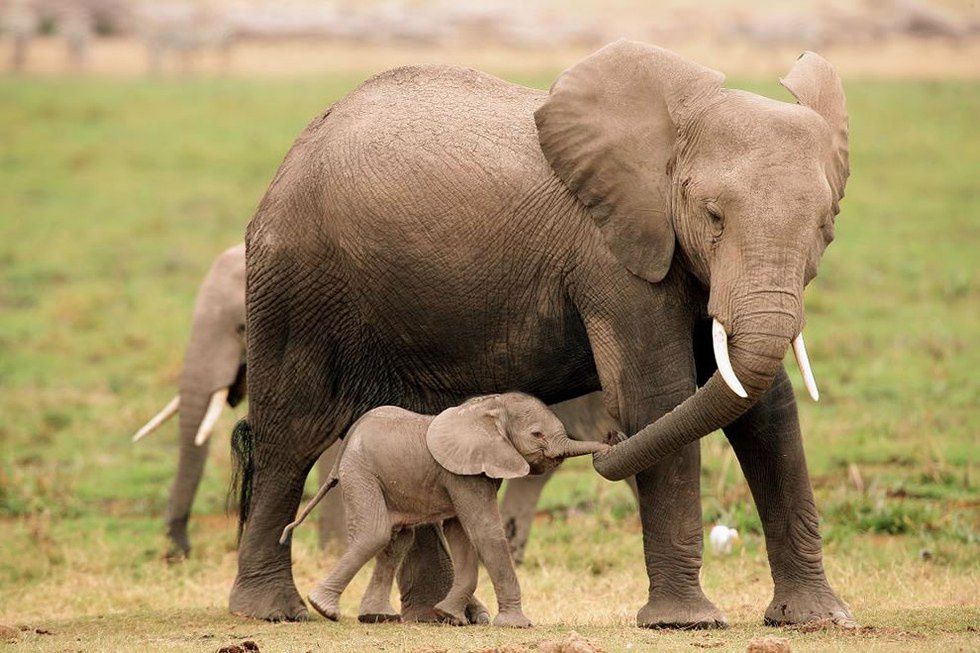What is your first thought when you think about an elephant? Do you think about them being in a circus? Do you think of them being killed for ivory trade? Do you think of them being endangered?
Sadly this is the life of an elephant and people can't really see the beauty behind these breath-taking behemoths, If you are all hears I'll be gladly to show you why elephants are so special.
Recommended for you
🐘 Symbolism 🐘
Ever since the stone age, when elephants were represented by ancient petroglyphs and cave art, they have been depicted in various forms of art, including pictures, sculptures, music, film, and even architecture. Elephants are a subject to mythology, symbolism, pop culture and are common icon of religion and folklore. Here's some examples.
- Ganesha: Ganesha is the well known story in the Hindu culture. The origin of the god's tale is ganesha was originally human but became depicted and had placed an elephant's head. One Hindu story describes how Ganesha was created by the goddess Parvati, who wanted a loyal son. Parvati’s husband, the powerful god Shiva, had been travelling while this happened. He was startled by young boy standing near his home, so drew his sword and severed the child’s head. Parvati was enraged and Shiva was distraught. He sent his soldiers out to bring him the head of the first living creature they came across, which just so happened to be an elephant. Shiva attached the elephant’s head on to Ganesh’s body and breathed life into it. He then accepted the boy-elephant hybrid as his own son.
- The tale of the white elephant: This is a well known Buddhist story about one of Budda's past life about a white elephant named Chaddanta who wore a scarlet face and welded six tusks. He lived in a golden cave with two wives, Mahasubhadda and Chullasubhadda. According to one version of the Buddhist story, Chaddanta insulted Chullasubhadda by giving his second wife a lotus flower. Chullasubhadda left him, and eventually hatched a plan – with her new lover the king of Benares - to steal his tusks as an act of vengeance. The king assigned a hunter, disguised as a monk, to retrieve his tusks. Although the elephant could have easily killed the hunter, he recoiled out of respect for religion. The hunter eventually explained the entire story, and Chaddanta cut off his own tusks, handed them to the hunter and died. When the hunter presented them to Chullasubhadda, she died of shock. Essentially, revenge is no good.
- The blind men and the elephant: This is the Indian tell of six blind men and they encounter a very large elephant for the very first time. When they set their hands upon it, each blind man felt a different part of its body – its flank, its tusk, its tail, its trunk, its ear and its leg. The men all described what they thought the elephant looked like to each other – one described it as a mud wall, one a spear, one a rope, one a snake, one a fan, and one a palm tree. They inevitably returned from their trip bickering about what the elephant actually looked like. This tale describes how essential it is to consider all views to build an accurate picture of reality: although all of the blind men were partially right, they were all ultimately wrong.
- The elephant and the thunder: This Kenyan myth tells how humans destroyed the harmony of creation. Three beings – the elephant, man and thunder – lived on earth, but didn’t get on because of their vast differences. Gradually, thunder became afraid of man’s power and left earth for the sky, whereas the elephant stayed because he thought man was small and harmless. When man and the elephant were alone, he fashioned poisonous arrows and shot the beast in the back. As the elephant lay dying, it wailed at the sky, begging thunder to save him. But thunder refused, saying that the elephant’s naivety had killed him. As the elephant died, man made more poisonous arrows and went on to kill more living creatures, eventually becoming the master of nature.
There are many other different folk tales about Elephants, and they are all waiting to be discovered by excited readers like you!
🐘 Pop-Culture 🐘
Besides the folklore aspect, Elephants have branched out into many icons that people with recognized, from being a political icon, To phrases, To being mascots for sports teams, To literature and finally movies and music. Here are some examples if you are unfamiliar.
- Pliny The Elder: He praised the elephants in his encyclopedia Naturalis Historia as one that is closest to a human in sensibilities
- Ivo Andrić': He wrote an novella called The Vizier's Elephant where the citizens of Travnik Bosnia and Herzegovina despise the young elephant who symbolizes the cruelty of the unseen Vizier. However, the elephant itself is young and innocent despite unknowingly causing havoc due to youthful play.
- Edgar Rice Burroughs: He wrote the Tarzan novels and add the elephant character Tantorwhich happens to be the generic term for "elephant" in the fictional simianMangani language, but is associated with a particular elephant who eventually becomes Tarzan's faithful companion, Then was animated by the wonderful works of Disney!
- Helen Aberson: And Speaking of Disney don't forget the story of Dumbo which is about a baby elephant learning how to fly in order to become a big hit at the circus. This is was based upon the story-line written by Helen Aberson and illustrated by Harold Pearl for the prototype of a novelty toy ("Roll-a-Book") Fun fact, there's a scene in the movie when Dumbo accidentally drinks champagne and sees Pink Elephants. "Seeing pink elephants" refers to a drunken hallucination and is the basis for the Pink Elephants on Parade.
- Jean de Brunhoff: He wrote the french children's story booksHistoire de Babar which was later translated for the american and united kingdom The Story of Babar Then later in the year 2000 got an animated tv show.
- Dr.Seuss: He brought the world Horton, From the books Horton Hatches the Egg and Horton Hears a Who! Horton is also one of lead roles in the Broadway performance seussical the musical and the main character in the movie Horton Hears a Who!
- Jules Verne: He featured a steam powered mechanical elephant in his novel The Steam House
- Ursula Dubosarsky: She wrote an adorable and imaginative story called Too Many Elephants in This House, which also plays with the notion of the elephant in the room.
- Sara Gruen: She wrote the historical novel Water For Elephants which is about the main character Jacob Jankowski's memories working a vet for the Benzini Brother's circus.
See? Very important elephants in from many different master pieces that you didn't even think about, And they are all waiting to be discovered by excited readers/viewers like you!
🐘 The hardships 🐘
Even though that these are wonderful creatures they have still faced the most ugliest hardships that are imaginable. Dumbo and Water of Elephants only touched the surface circus life for these animals.
Circus: There are some circuses that are still in production and they are torturing the elephants just so they could make money off of them. And its not just the elephants that go through this, other circus animals do too! And unfortunately the well known Ringling brothers are still in production and those animals deserve to be sent to a sanctuary. If you agree you can sign petitions like this one, this one, and this one
Tourist attractions: Sometimes Elephants are taken from the wild and are used in under kept zoos, and festivals. They are either cooped up in small holding areas or they are abused. This is very similar to the behavior circus, If you think these elephants deserve to be sent to a sanctuary then you can sign petitions like this one, this one,this one, this one and this one
Ivory trade: Elephants and Rhinos have been killed just for the sake of their tusks, ivory figurines are made tusks. The ivory trade has been banned in America, France, and Kenya but sadly not in Twain. If you want your voice to speak out for the Elephants you can sign petitions like this one and this one
So as you can see, These wondrous animals are taken for granted. And they need as much help as they can get. These animals are endangered and are only three types of elephants that exist! I'd rather see happy elephants like this one, this one, this one, this one, this one, this one, this one, this one and this one
If you truly want to help these animals, They will never forget you, because you know what they say "An elephant never forgets."




